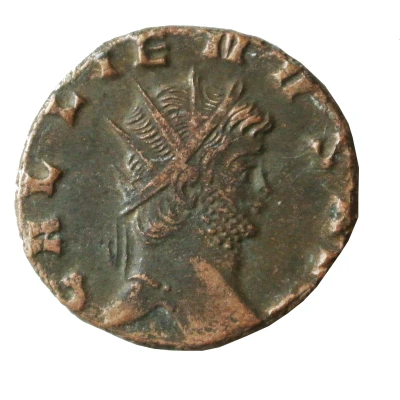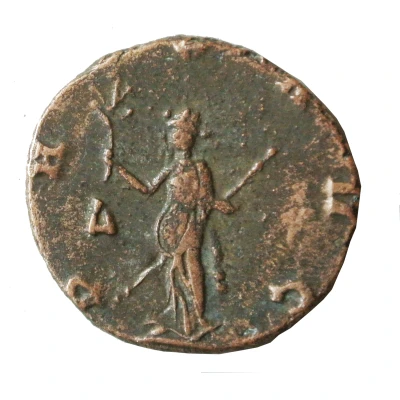


© sam64
Antoninianus - Gallienus PAX AVG; Rome
| Billon (.200 silver) | 3.1 g | 18 mm |
| Issuer | Rome › Roman Empire (27 BC - 395 AD) |
|---|---|
| Emperor | Gallienus (Publius Licinius Egnatius Gallienus) (253-268) |
| Type | Standard circulation coin |
| Years | 260-268 |
| Value | Antoninianus (1) |
| Currency | Antoninianus, Reform of Caracalla (AD 215 – 301) |
| Composition | Billon (.200 silver) |
| Weight | 3.1 g |
| Diameter | 18 mm |
| Shape | Round (irregular) |
| Technique | Hammered |
| Orientation | Coin alignment ↑↓ |
| Demonetized | Yes |
| Updated | 2024-10-05 |
| Numista | N#62572 |
|---|---|
| Rarity index | 74% |
Reverse
Pax standing facing, head left, holding an olive-branch with right hand raised and a transversal sceptre in left hand.
Officina mark in left or right field.
Scripts: Latin, Greek
Lettering:
PAX AVG
Δ
Translation:
Pax Augusti
(Peace of the August)
Edge
Rough
Comment
This coin appears to have been struck by 3rd, 4th and 5th officina only.Not to be confused with RIC#253 which bears reverse lettering as PAX AETETERNA or PAX AETERNA AVG.
Interesting fact
One interesting fact about the Antoninianus coin is that it was introduced by the Roman Emperor Gallienus in 260 AD as a replacement for the denarius, which had been the standard Roman currency for centuries. The Antoninianus was made of billon, a silver-like alloy containing 20% silver and 80% copper, and it weighed 3.1 grams. Despite its lower silver content, the Antoninianus was still considered a valuable currency and was widely used throughout the Roman Empire.